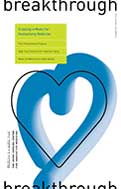
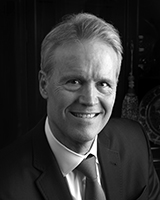
David B. Hellmann,
MD, MACP
Like many of us within our community and around the world, I watched with fascination recently as NASA’s Double Asteroid Redirection Test (DART) successfully completed its amazing mission of colliding with a small asteroid and knocking the space rock off its course. Johns Hopkins pride was in evidence for the big event, since it was the university’s Applied Physics Laboratory that led the mission on behalf of NASA.
It was quite a feat. Simply put, the DART mission showed that our best scientists now have a successful strategy to literally save the world from a catastrophic, humanity-ending asteroid collision should a large body find itself in the future with its sights on Earth.
It struck me that DART — a modest spacecraft that traveled 7 million miles over 10 months to nudge an asteroid just slightly off its course — is an apt metaphor for Johns Hopkins Medicine in general and the Center for Innovative Medicine in particular. When the Johns Hopkins University School of Medicine opened in 1893, this moderate-sized school in the moderate-sized city of Baltimore was up against an “asteroid” of medical ignorance of the day: lethal practices like bloodletting, blistering and high doses of mineral poisons. Yet Johns Hopkins managed to make a world-saving impact by nudging the world of health care into an entirely new orbit: one informed by evidence-based practice.
In a similar vein, CIM’s Miller Coulson Academy of Clinical Excellence got its start in 2008 in a single department, the Department of Medicine, on one campus, Bayview Medical Center. In the years since then, the MCACE has vastly expanded to impact departments across the Johns Hopkins Medicine enterprise. Most notably, it has pushed the entire faculty promotions process into a new orbit with a new path to promotion — a true game changer that, for the first time in the institution’s history, rewards Johns Hopkins Medicine faculty members for their excellence in clinical care.
Now, we at CIM are creating another “DART” mission to take on a dangerous crisis in health care today: a high-tech, low-touch approach to medical care that has left patients feeling dehumanized and clinicians burned out. I’m confident that with careful aim and a whole lot of creativity, CIM’s new Institute for Humanizing Medicine (which you can read more about on p. 2) will be just what our world needs to knock the asteroid of poor health care into a brand-new, healing orbit. And I invite you to join us on our mission. for the future.

David B. Hellmann, M.D., M.A.C.P.
Aliki Perroti Professorof Medicine
Don Willett November 2nd, 2022
Posted In:

David B. Hellmann,
MD, MACP
Like many of us within our community and around the world, I watched with fascination recently as NASA’s Double Asteroid Redirection Test (DART) successfully completed its amazing mission of colliding with a small asteroid and knocking the space rock off its course. Johns Hopkins pride was in evidence for the big event, since it was the university’s Applied Physics Laboratory that led the mission on behalf of NASA.
It was quite a feat. Simply put, the DART mission showed that our best scientists now have a successful strategy to literally save the world from a catastrophic, humanity-ending asteroid collision should a large body find itself in the future with its sights on Earth.
It struck me that DART — a modest spacecraft that traveled 7 million miles over 10 months to nudge an asteroid just slightly off its course — is an apt metaphor for Johns Hopkins Medicine in general and the Center for Innovative Medicine in particular. When the Johns Hopkins University School of Medicine opened in 1893, this moderate-sized school in the moderate-sized city of Baltimore was up against an “asteroid” of medical ignorance of the day: lethal practices like bloodletting, blistering and high doses of mineral poisons. Yet Johns Hopkins managed to make a world-saving impact by nudging the world of health care into an entirely new orbit: one informed by evidence-based practice.
In a similar vein, CIM’s Miller Coulson Academy of Clinical Excellence got its start in 2008 in a single department, the Department of Medicine, on one campus, Bayview Medical Center. In the years since then, the MCACE has vastly expanded to impact departments across the Johns Hopkins Medicine enterprise. Most notably, it has pushed the entire faculty promotions process into a new orbit with a new path to promotion — a true game changer that, for the first time in the institution’s history, rewards Johns Hopkins Medicine faculty members for their excellence in clinical care.
Now, we at CIM are creating another “DART” mission to take on a dangerous crisis in health care today: a high-tech, low-touch approach to medical care that has left patients feeling dehumanized and clinicians burned out. I’m confident that with careful aim and a whole lot of creativity, CIM’s new Institute for Humanizing Medicine (which you can read more about on p. 2) will be just what our world needs to knock the asteroid of poor health care into a brand-new, healing orbit. And I invite you to join us on our mission. for the future.

David B. Hellmann, M.D., M.A.C.P.
Aliki Perroti Professorof Medicine
Don Willett November 2nd, 2022
Posted In:
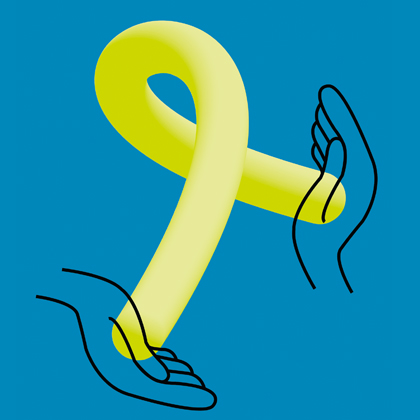
On a crisp morning in early September, more than 50 of Johns Hopkins Medicine’s most visionary thinkers and doers gathered at Folly Farm — the beautiful Baltimore County home of Stephanie Cooper Greenberg, who is chair of CIM’s International Advisory Board — for CIM’s annual retreat. The group’s mission: to advance the initiative to create CIM’s new Institute for Humanizing Medicine.
The rationale for creating the Institute for Humanizing Medicine at Johns Hopkins is four-fold, notes CIM Director David Hellmann:
In the months since the concept for the institute was introduced at last year’s retreat, it has been greeted with great enthusiasm by trustees, faculty members and donors. “In fact,” says Hellmann, “nothing CIM has done has attracted so many donors so quickly.” Over the last six months, he says, “CIM has received nearly $3 million in contributions and pledges.”
Indeed, leaders from across Johns Hopkins Medicine who attended the retreat were unanimous in their passionate support for the mission of the Institute for Humanizing Medicine.
Noting that getting to know patients as people “goes to the very core of what it means for us to be great caregivers,” Theodore DeWeese, interim dean of the School of Medicine, says the new Institute for Humanizing Medicine will pursue that mission “the Hopkins way” — through research, applying the fruits of that research to improve patient care, and then teaching best practices to learners at Johns Hopkins and beyond. “The good news is that we have a great head start, since all of you gathered here are already practicing a humanistic form of medicine,” DeWeese said, gesturing to the clinicians seated around him.
“Getting to know patients as people goes to the very core of what it means for us to be great caregivers.” — Theodore DeWeese
In his role as president and CEO of the Kennedy Krieger Institute, physician Bradley Schlaggar noted that a humanistic approach to care is more needed than ever in the treatment of young patients with disorders of the brain, the population his institute serves. Unfortunately, he says, American health care policy has led to significant “mental health disparities,” whereby many families can’t afford to get the kind of care their children need.
“If we are going to prioritize patient-centered care [for mental health],” he said, “we must build our policies around it.”
A key element of the Institute for Humanizing Medicine is its far-ranging reach across Johns Hopkins Medicine. It will bring together clinicians and scientists from medicine, public health, business and — importantly — from nursing. That’s critical, said Deb Baker, senior vice president for nursing for the Johns Hopkins Health System, because, she said, “nurses are the ‘patient whisperers.’” She noted, “There’s an emotional intimacy in the relationship that nurses have with patients. Nurses are the connectors.”
The new institute will transform the delivery of medical care at Johns Hopkins and beyond so that every patient is known as a person, with a “key focus on respect, trust and empathy.” — Allen Kachalia
The Institute for Humanizing Medicine will also draw upon the proven effectiveness of the Johns Hopkins Armstrong Institute for Patient Safety and Quality, which has galvanized Johns Hopkins to focus on eliminating harm to patients and has changed the way the world views patient safety. In a similar fashion, the new institute will transform the delivery of medical care at Johns Hopkins and beyond so that every patient is known as a person, with a “key focus on respect, trust and empathy,” said Armstrong Institute Director Allen Kachalia. While establishing an institute “won’t make health care’s problems go away,” he said, “it will allow us to set institutional priorities in a clear way and advance the science of humanizing medicine.”
Professors of Medicine Mary Catherine Beach and Cynthia Rand will lead the new Institute for Humanizing Medicine in its tripartite mission — of educating trainees and students, identifying the most impactful research questions, and defining the best patient care interventions that are supportive of clinicians. Both Beach and Rand, internationally renowned for research relevant to humanizing medicine, have been appointed the first CIM Institute for Humanizing Medicine Scholars.
“As the nature of medicine has become increasingly transactional, we have lost a core part of the therapeutic relationship. Humanism is that core part of being a health care provider.” — Cynthia Rand
The duo are optimistic about what the new institute can accomplish and are committed to its mission.
Beach, a bioethicist, has devoted much of her 26-year career in medicine to investigating how respect and communication play out between patients and clinicians, with the goal of improving care for each patient. She noted that too many research models examining clinician communication focus on “what we do wrong, rather than on what clinicians do well.” She said, “We have remarkable clinicians here at Johns Hopkins, and we must take a ‘bottom-up’ approach to learn from them.”
Rand, who is senior associate dean for faculty, said, “As the nature of medicine has become increasingly transactional, we have lost a core part of the therapeutic relationship.” She added, “Humanism is that core part of being a health care provider.”
Rand continued, “With the new institute, we will create a connective tissue across Johns Hopkins that will allow us to rebuild the health care system and make Johns Hopkins a model for the world.”
Don Willett November 2nd, 2022
Posted In:
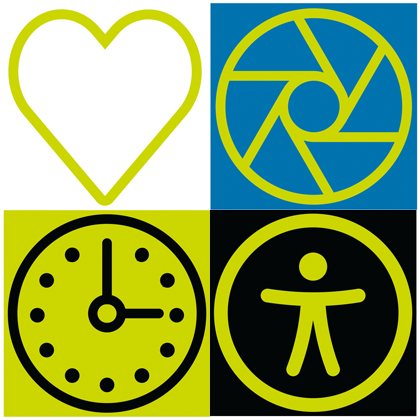
When Johns Hopkins cardiologist Roy Ziegelstein coined the term “personomics” in a widely cited editorial in Journal of the American Medical Association in 2015, he launched a movement that would have an important impact on the medical community at Johns Hopkins and far beyond.
His premise? In the rush to embrace the high-tech advances of precision medicine, too many doctors can lose sight of the individual patient’s unique life experiences. “Patients, in what some describe as a ‘no me’ experience, can wind up feeling left out, and that’s not what doctors want,” says Ziegelstein, a Miller Coulson master clinician and the Sarah Miller Coulson and Frank L. Coulson, Jr. Professor of Medicine.
The enthusiastic embrace of “personomics” on the part of physicians, Ziegelstein believes, “reflects the disconnect that many doctors have been feeling — and want to fix.”
At the Center for Innovative Medicine, the latest exciting effort to address that disconnect is the Barbara and Peter K. Miller Scholars Personomics Initiative. The initiative, which falls under the umbrella of CIM’s new Institute for Humanizing Medicine, will provide funding to support residents and fellows across a diverse range of specialties to lead “transformative projects” aimed at developing learners’ skills “in the science and art of personomics,” explains Jessica Bienstock, senior associate dean for graduate medical education.
When her team put out a call for proposals, they were heartened by the broad range and scope of projects that trainees put forth. Ultimately, seven “Personomics Projects” have been selected for funding this first year. They include:
Photojournalism
A photojournalism project, led by plastic and reconstructive surgery residents Cecil Qui and Patrick Keller, that will follow 12 patients over two years, with the aim of placing the patients’ reconstructive surgeries “in the context of their larger medical journey, their day-to-day lives and their personal identities.”
The duo, both amateur photographers, will also conduct interviews with the patients and their surgeons. “Through these interactions, we will highlight moments of hope, unforeseen challenges and the transformative experience of reconstructive surgery,” note the trainees, who ultimately aim to share the photos and interviews in an online publication viewable by staff and the public.
Missed appointments
A study aimed at identifying the factors that lead to patients failing to show up for medical appointments. Too often, note dermatology residents Eugene Park and Angel Diaz, “’no-shows’ often remain nothing more than meaningless names on a screen … and we often fail to register that in each of these cases, there is a real human who at one time sought our help, with his or her own struggles, needs and obstacles.”
Through standardized surveys and interviews, the residents aim to aggregate common reasons that lead to ”no-shows” — such as transportation issues, language barriers or childcare needs — and ultimately identify measures to prevent missed appointments in the future. “There may be worlds of empathy to gain from these patients we never know,” write Park and Diaz in their proposal.
Whole-Person Care
Implementation of a “Whole-Person Care” clinical documentation template within the electronic medical record. The goal of the template, says internal medicine resident Amy Shah, is to “give physicians a systematic way of connecting with their patients holistically” by integrating discussion of belief systems, social determinants of health and personal values. “The aim of this note template is to learn about patients beyond their medical issues and use their individual values to guide their health care decisions,” Shah writes.
“We’ll be creating a ‘community of practice’ — a learning collaborative of Barbara and Peter K. Miller Scholars who are passionate about getting to know patients as people.” — Jessica Bienstock
While these two-year projects themselves will yield important results, notes Bienstock, there’s an additional, crucial element of the personomics initiative. “We’ll be creating a ‘community of practice’ — a learning collaborative of Barbara and Peter K. Miller Scholars who are passionate about getting to know patients as people,” she says. The scholars will meet monthly for skill-building and peer mentoring workshops, providing ample opportunity for networking and collaboration.
Such collaboration will go a long way toward addressing the factors that can contribute to physician burnout, which is a growing crisis in the American health care system today, Bienstock notes.
“People generally go into medicine because they care about relieving suffering and about connecting with patients to help guide them through some of the most vulnerable times of their lives. But during medical school and residency, there’s so much to learn and so much time pressure — time spent getting to know your patients can easily get buried under all the other pressures,” she says. “One way to combat burnout is through connection with meaning and purpose. And the key way to make these connections with meaning is through having the time to get to know your patients.”
Don Willett November 2nd, 2022
Posted In:
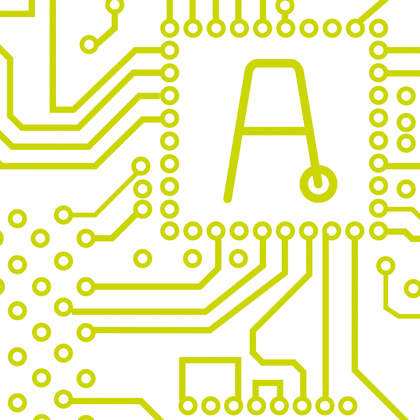
Among older adults, a good night’s sleep can be elusive: An estimated 50% suffer from a sleep disorder, putting them at risk for a cascade of poor health outcomes, including short- and long-term cognitive decline, falls, and a reduced ability to perform daily tasks.
Now imagine a device, worn comfortably on a headband, that could gently stimulate an older wearer’s brain to enhance the “deep sleep” portion of their nightly slumber. That’s the ultimate goal of a student team that is the first to advance through the Gerotech Incubator Program (see p.11), launched in spring 2020 as part of the Johns Hopkins Human Aging Project (HAP). The team will develop and test their prototype in the months ahead and has plans to create a startup company to produce it.
Crucial to advancing this team’s efforts is funding and support the students have received from the Johns Hopkins Artificial Intelligence & Technology Collaboratory for Aging Research (AITC), which was established in November 2021 with $20 million in funding from the National Institute on Aging. The goal of the AITC, which also falls under the umbrella of the Human Aging Project, is “to spur development of artificial intelligence devices to improve the health of older adults and help them live independently for longer,” notes HAP Director Jeremy Walston, the Salisbury Family Foundation CIM Scholar.
“So many older adults accumulate health problems that impact their ability to stay in their own homes and enjoy meaningful social interactions,” says Walston. “With the Gerotech projects and the many exciting ideas already coming out of the AITC, we’re tapping into the power of technology to ‘disrupt’ these problems.”
In the year since the AITC put out a call for proposals, a variety of promising projects — submitted by stakeholders across Johns Hopkins and beyond — have already gotten the green light for funding and development. They run the high-tech gamut, from wearable devices to robots, and many tap into powerful advances in sensor technology.
Among the AITC projects underway:
The Human Aging Project has already attracted more than $60 million in funding, and 11 faculty members are now supported in their work as Human Aging Project scholars. Nine of those HAP scholars have been funded through the Center for Innovative Medicine.
The AITC is structured so that advances like these won’t remain academic pursuits but will be ushered along a pathway of eight cores, or workgroups, that will bring devices into the marketplace.
Walston is optimistic that, given the synergy at play, commercialization will happen quickly. “Because we’re working closely with industry, that will facilitate our ability to move these products from academia and into the marketplace,” he says. “With some of these engineered devices, I expect that we’ll be pushing them out the door in the next year or two.”
Walston notes that the AITC projects are emblematic of the broader mission of the Johns Hopkins Human Aging Project, which brings together faculty members and students from the schools of medicine, engineering, nursing and business to collaborate on improving the health of the nation’s rapidly graying population.
“We are leveraging assets from across Johns Hopkins so that clinicians can identify the health issues that older adults face and engineers can come up with carefully crafted solutions,” he says.
The Human Aging Project has already attracted more than $60 million in funding, and 11 faculty members are now supported in their work as Human Aging Project scholars. Nine of those HAP scholars have been funded through the Center for Innovative Medicine.
“We are incredibly grateful to the Center for Innovative Medicine and to David Hellmann for his tireless advocacy,” says Walston. “David’s vision, and the generosity of CIM’s donors, have been crucial to moving the Human Aging Project forward.”
Don Willett November 2nd, 2022
Posted In: